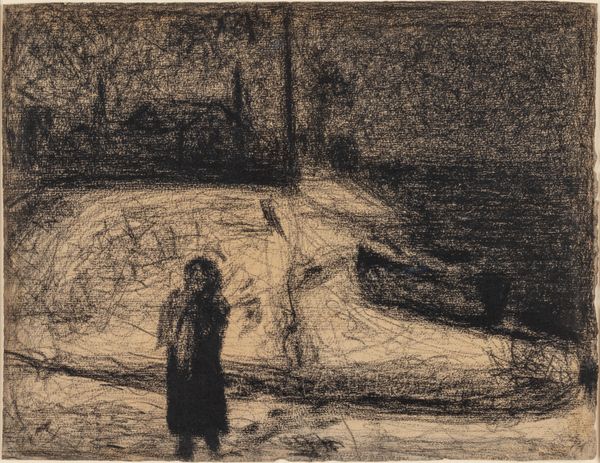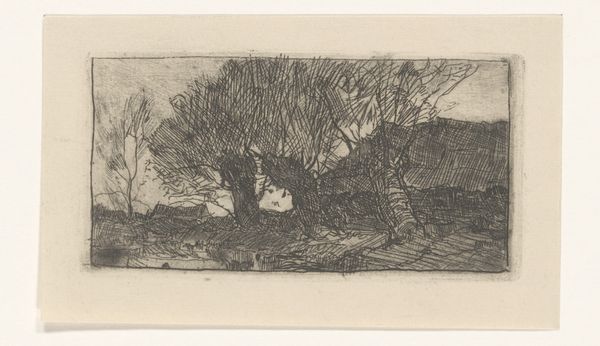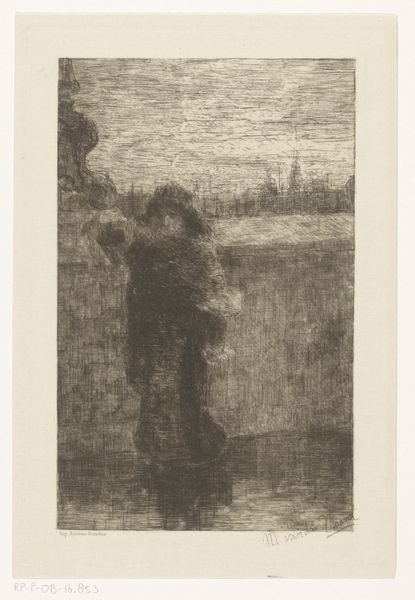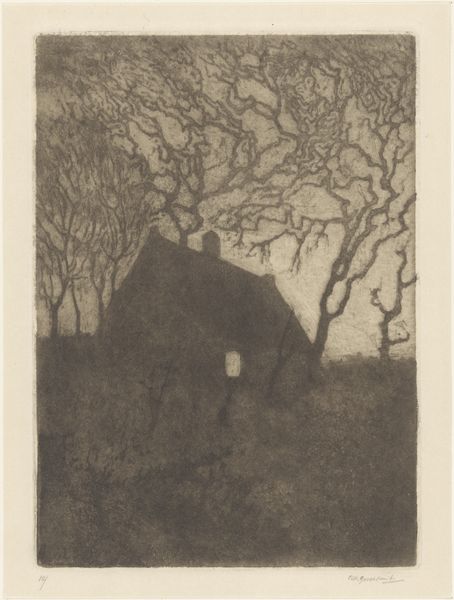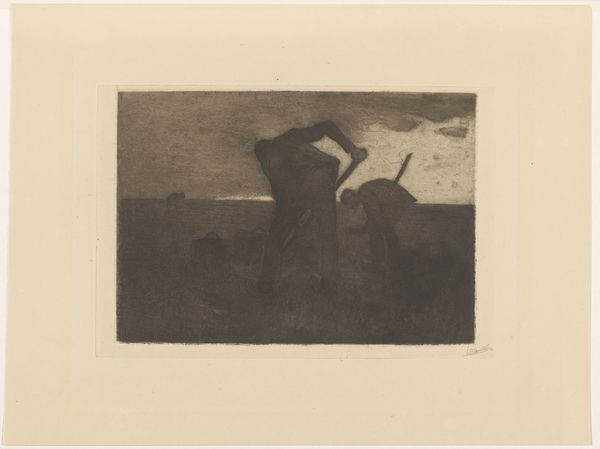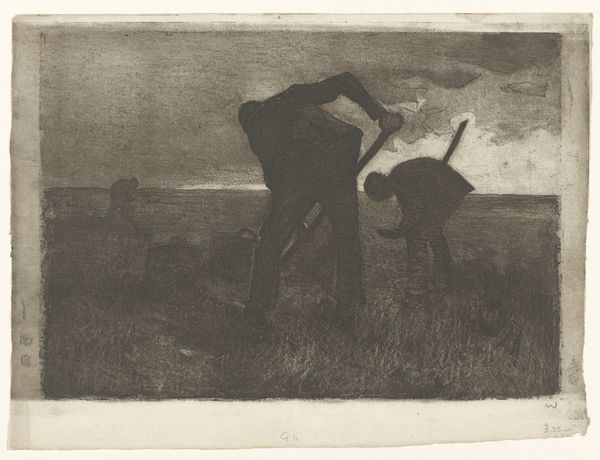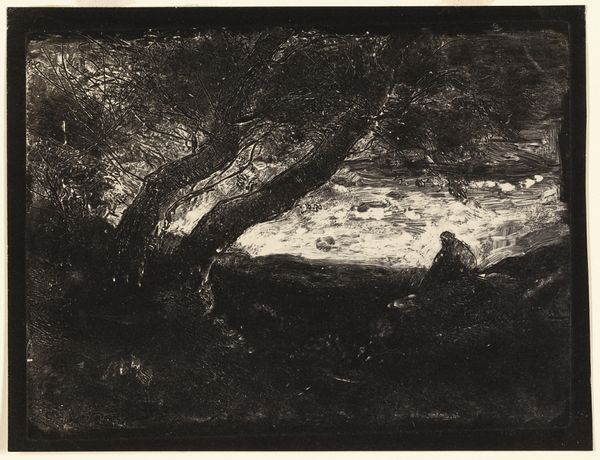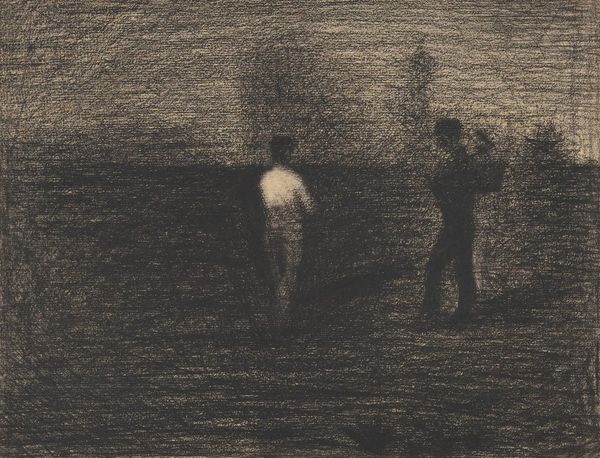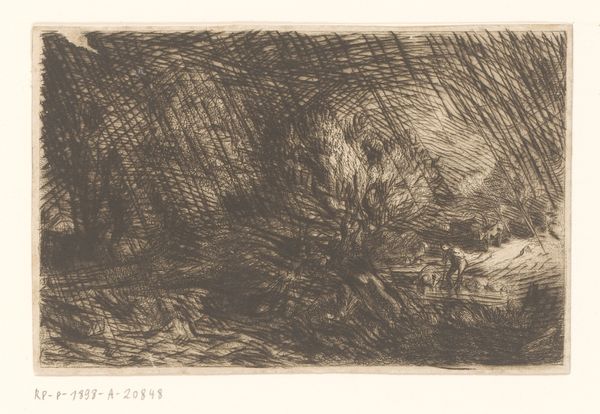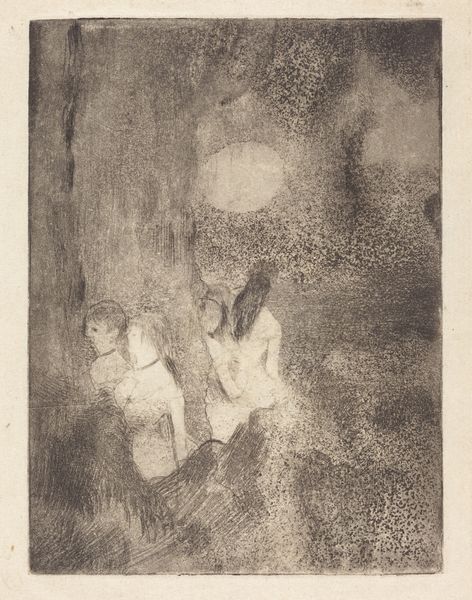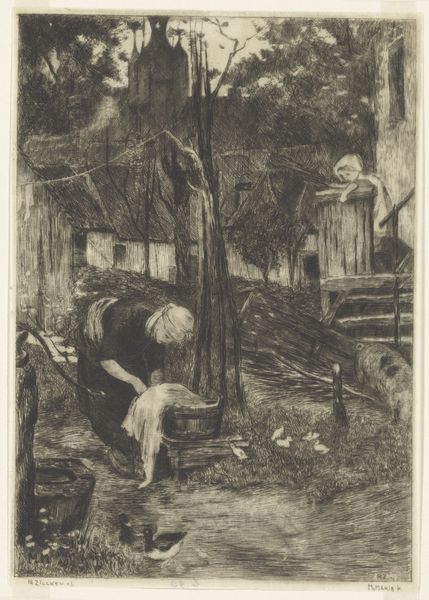
Dimensions: 128 × 178 mm (image/plate); 298 × 401 mm (sheet)
Copyright: Public Domain
Curator: This is "On the Ice," an etching created by Anders Zorn in 1898. It's currently held at the Art Institute of Chicago. My initial response is of somber contemplation— the stark contrasts immediately suggest a story about enduring harsh realities. Editor: Somber is right. I find it intensely evocative, almost unsettling. The darkness seems to close in. But even within the stark darkness, the artist manages to highlight these flickering areas, providing light, perspective and some much-needed human presences in what feels like a very cold picture. Curator: Indeed. The human figure, while obscured by the shading, it adds depth, creating a powerful sense of isolation. Zorn's figures, in their ambiguity, almost appear as archetypes within this composition, symbols of resilience facing a forbidding landscape. How does the medium, the etching, influence our reading of its symbolism? Editor: The use of etching feels essential here. Those fine, deliberate lines contribute to this heavy, pressing darkness and help establish Zorn’s narrative about Sweden and its own complex cultural identity during the late 19th century. The mark-making also serves to portray people’s relationships to a land not only harsh, but potentially unforgiving. What is often missed about images is that they carry immense amounts of public information and Zorn's choice here provides viewers access into 19th-century attitudes of Scandinavians’ relationship with their landscape. Curator: I think you raise an excellent point on the public information contained. And speaking of that relationship to landscape, water – particularly frozen water - often is used to denote a state between transitions or the symbolic death that presages rebirth. How might the people in Zorn's etching relate to this broader symbol? Editor: Given the setting and figures, Zorn may be encouraging us to connect winter’s landscape and the implied themes of challenge and endurance. However, given the date this was produced and circulated in society, I wouldn't be surprised if some of the piece’s reception related more towards seeing representations about social anxieties of poverty or hard labor during a period of rapid urbanization. Curator: That’s a compelling insight – the etching functioning as a mirror reflecting anxieties about urbanization and class disparity. It certainly challenges my reading of pure stoicism and continuity and invites a broader historical awareness when looking at this art piece. Editor: Agreed. Ultimately, its power resides in its ability to hold multiple layers of interpretation, to speak to both universal human experiences and specific social realities of its time. Curator: Absolutely. This piece highlights the lasting impact an artist can have on shaping conversations on shared historical values, trauma, or just day to day life.
Comments
No comments
Be the first to comment and join the conversation on the ultimate creative platform.

